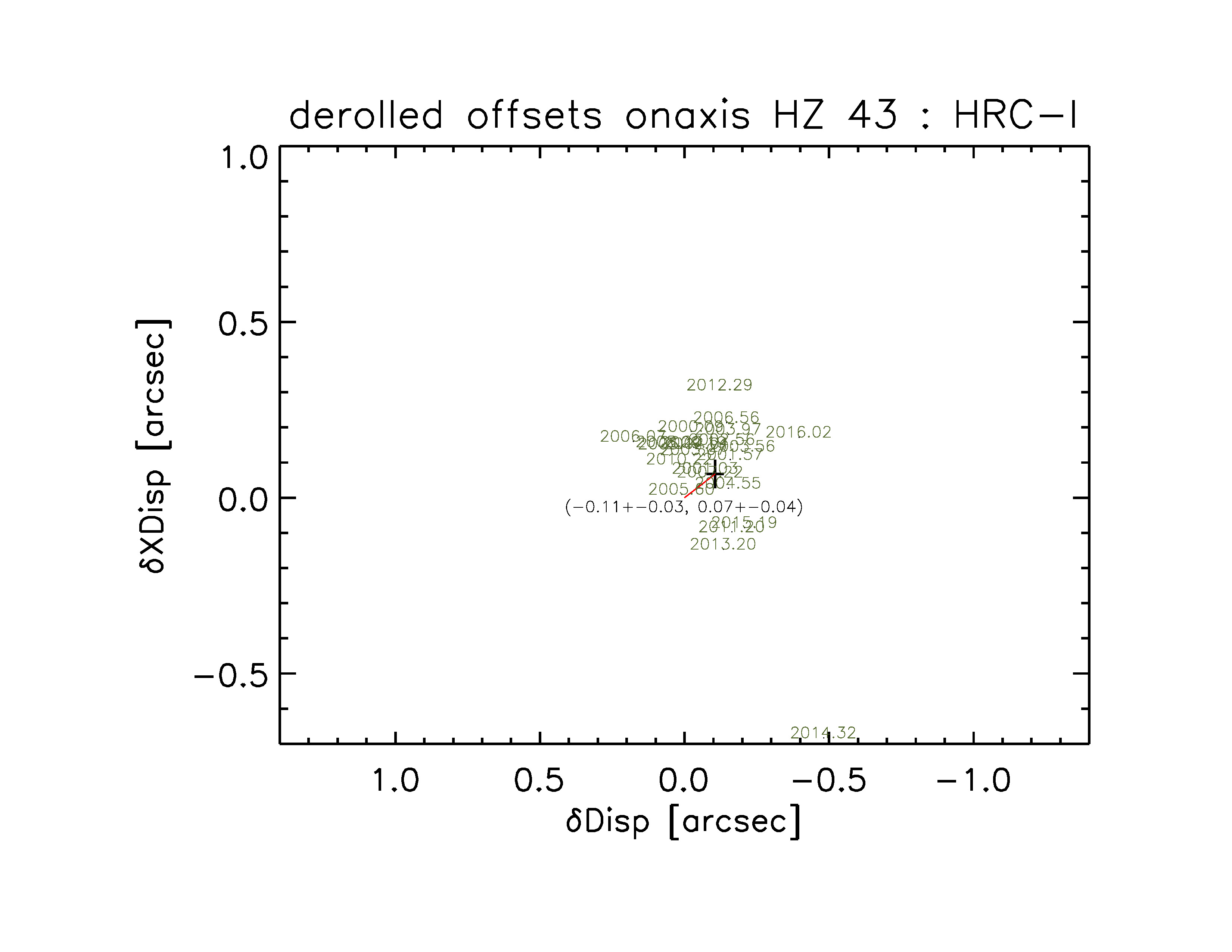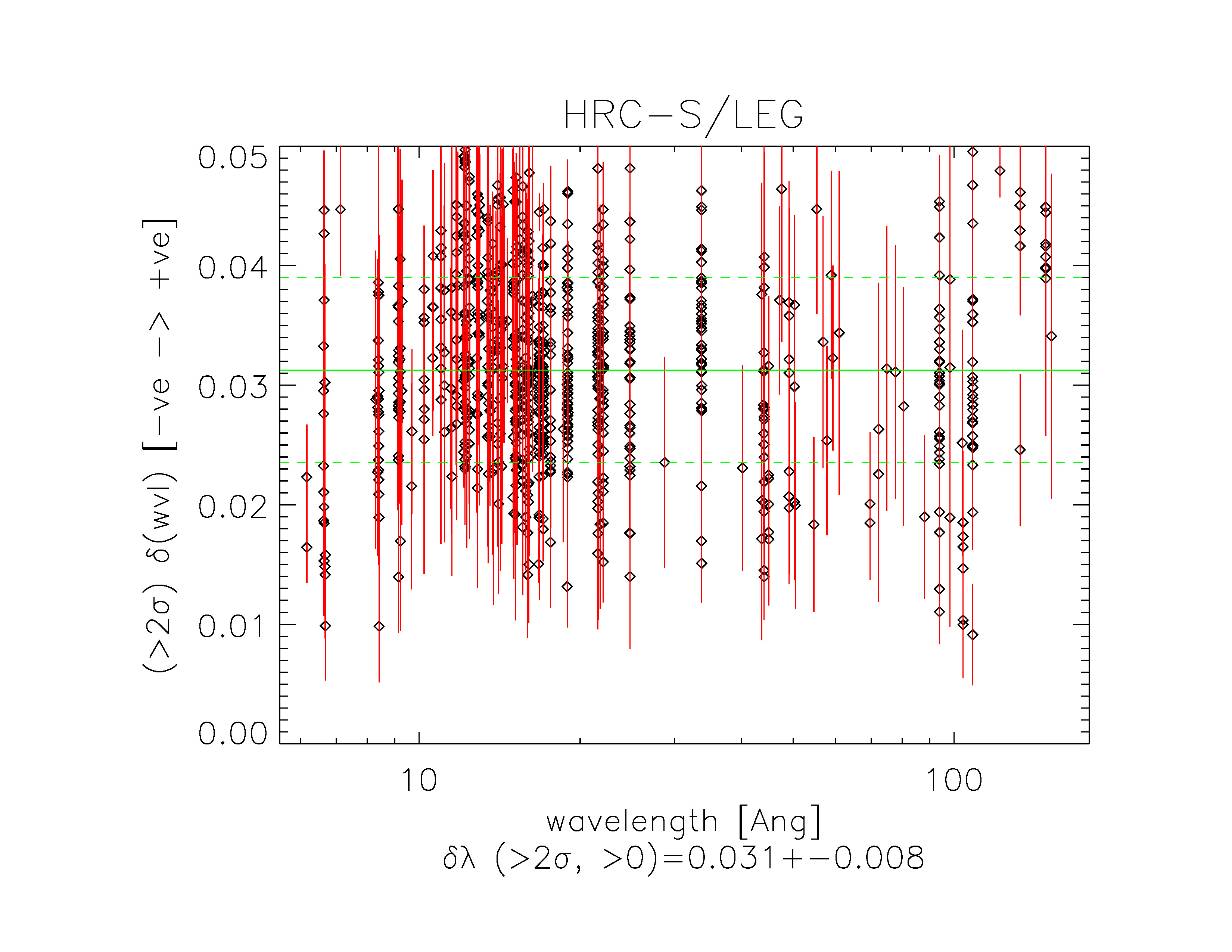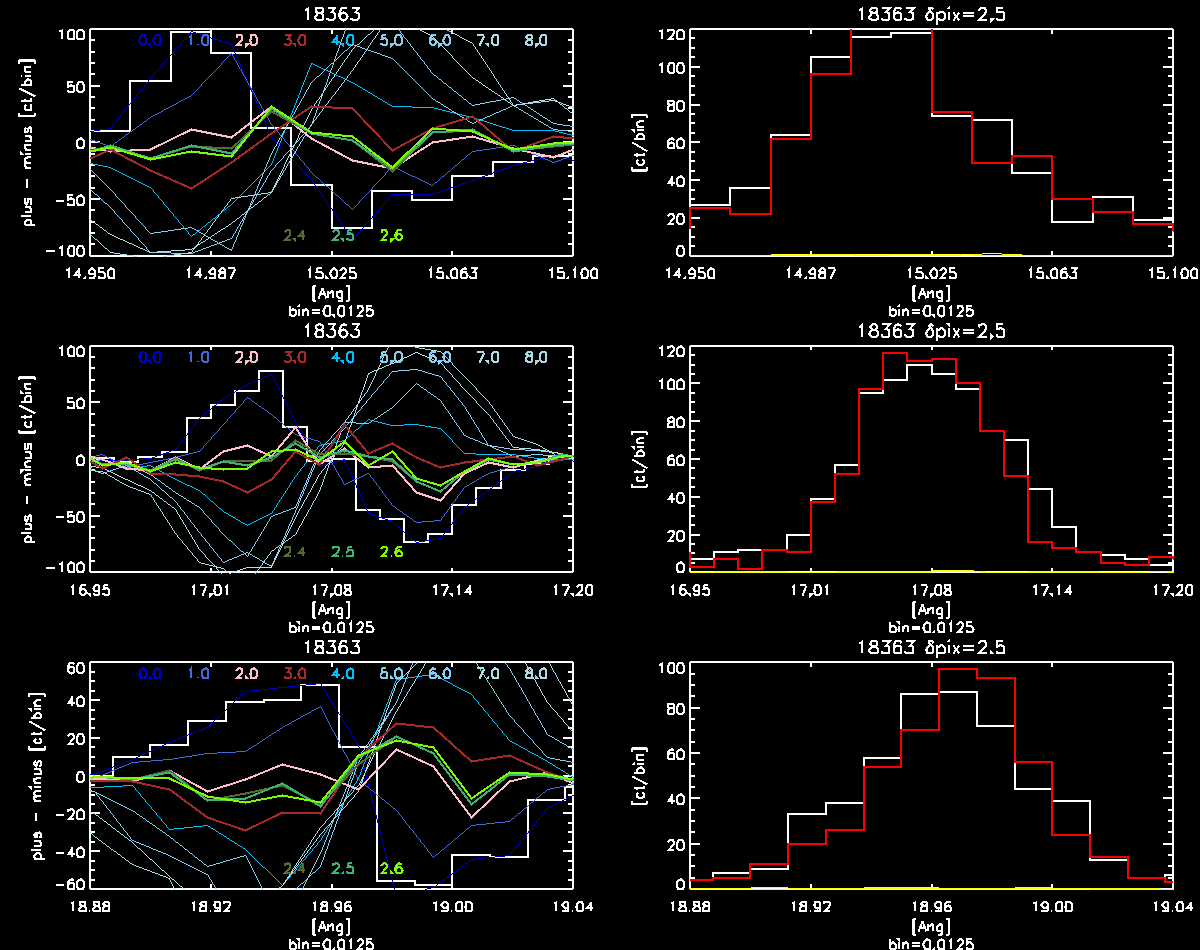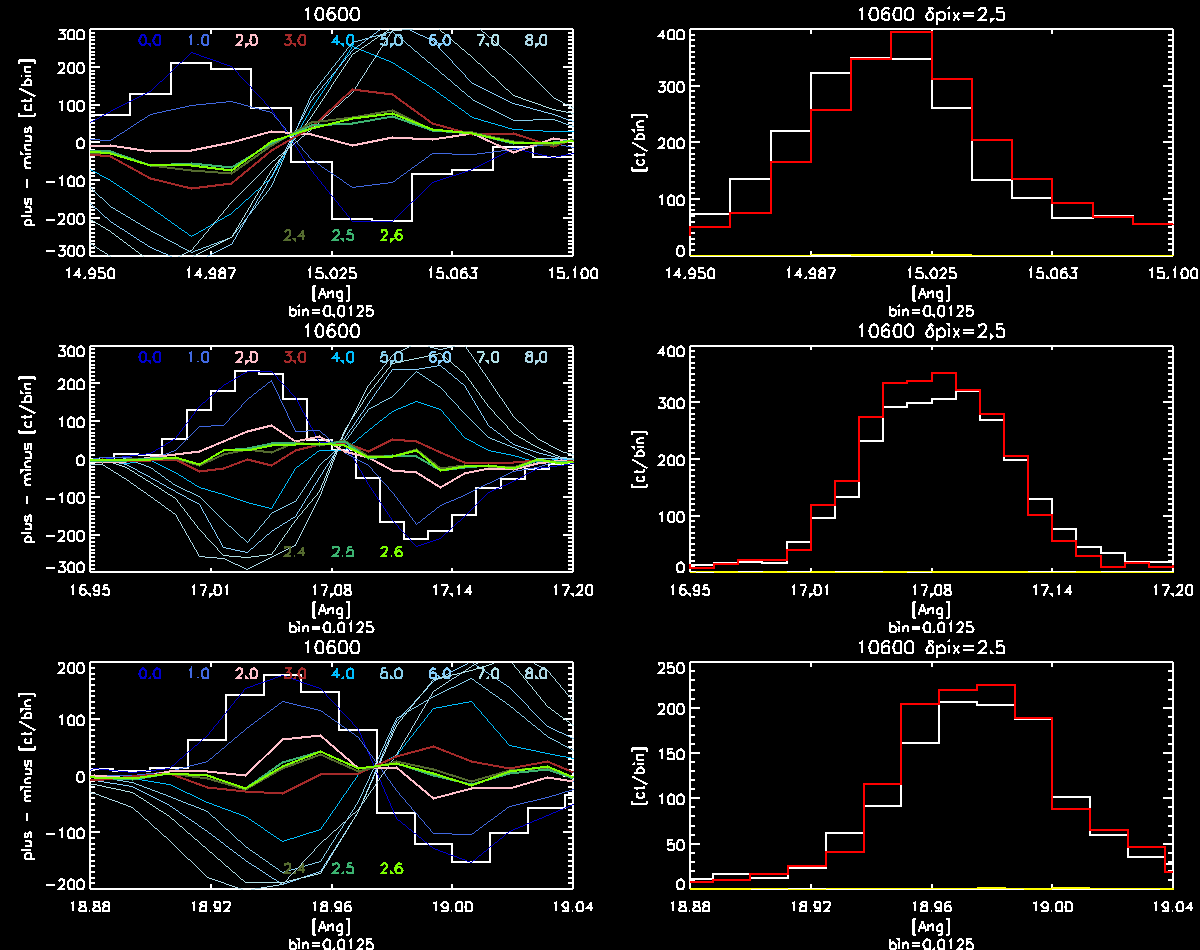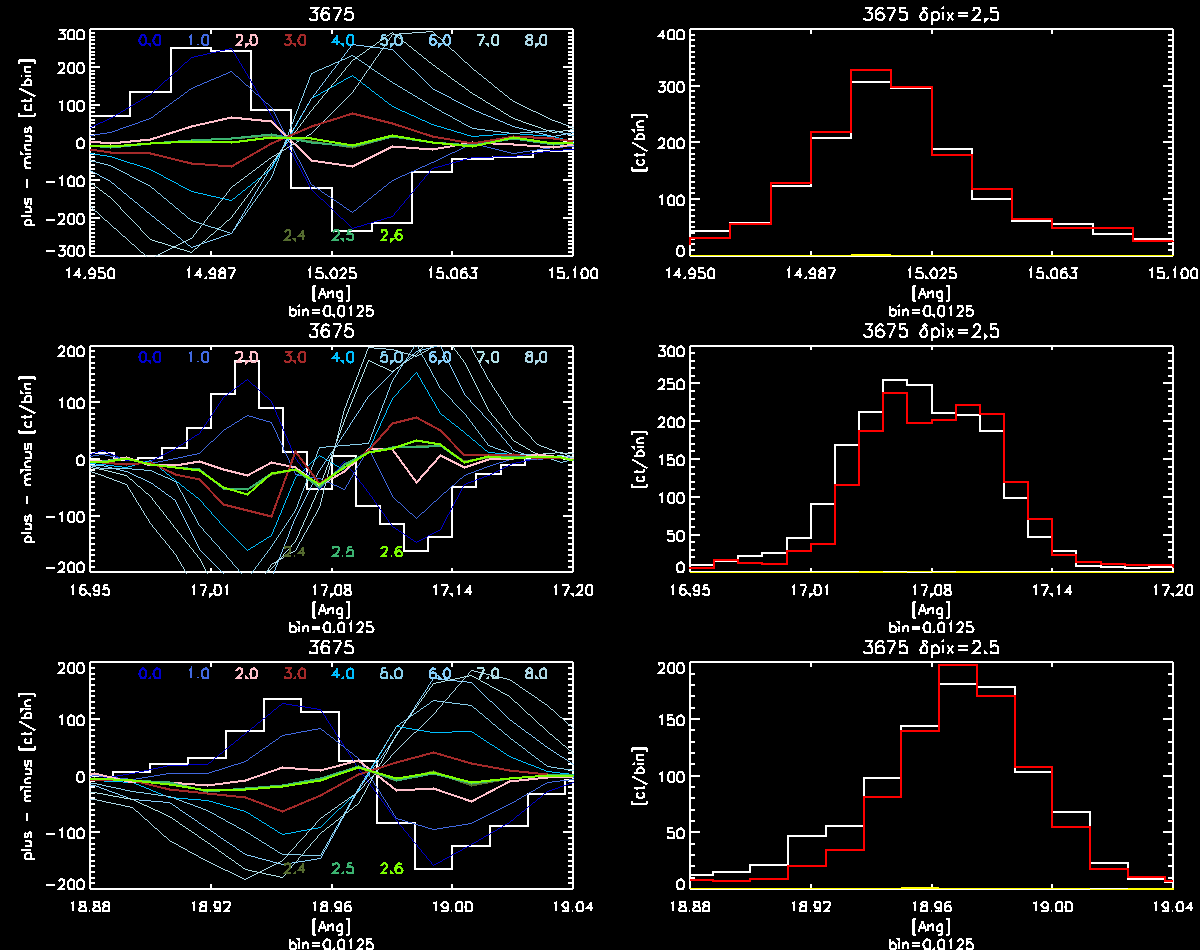Figure 1: Source offsets attributable to degap bias near aimpoint observations. A shift of approximately -0.5 arcsec, with a possible systematic uncertainty of ~0.1 arcsec, is consistently seen in HRC-S, corresponding to approximately 3.8 (~0.8) pixels.
A. Track of AR Lac observed with HRC-S. The expected locations, corrected for proper motion, are shown as blue `+'s on a straight line. The actual locations are at the other ends of the red line segments that connect to the expected locations, and are marked with the epoch of the observation.

B. HRC-S/AR Lac position residuals. The difference between the expected and observed source locations is shown in derolled coordinates, with the X-axis corresponding to the dispersion axis and the Y-axis corresponding to the cross-dispersion axis. The `+' sign shows the average location based on all the observations (marked by their epochs), with a red line segment connecting it to the nominal location of (0,0). The offset is measured as -0.52±0.04 along the dispersion directon, and -0.18±0.03 in the cross-dispersion direction.
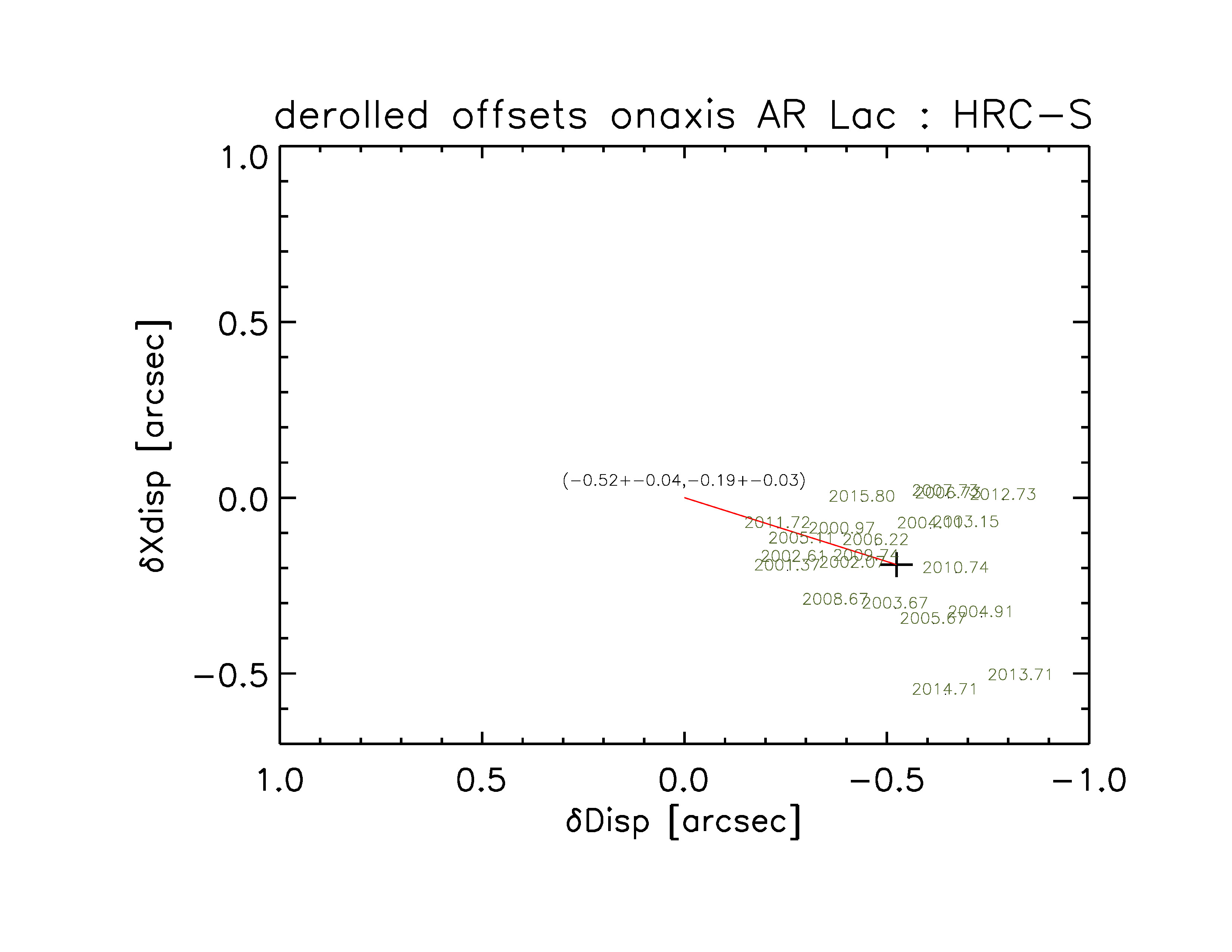
C. As in 1.A, showing the track of AR Lac observed with HRC-I
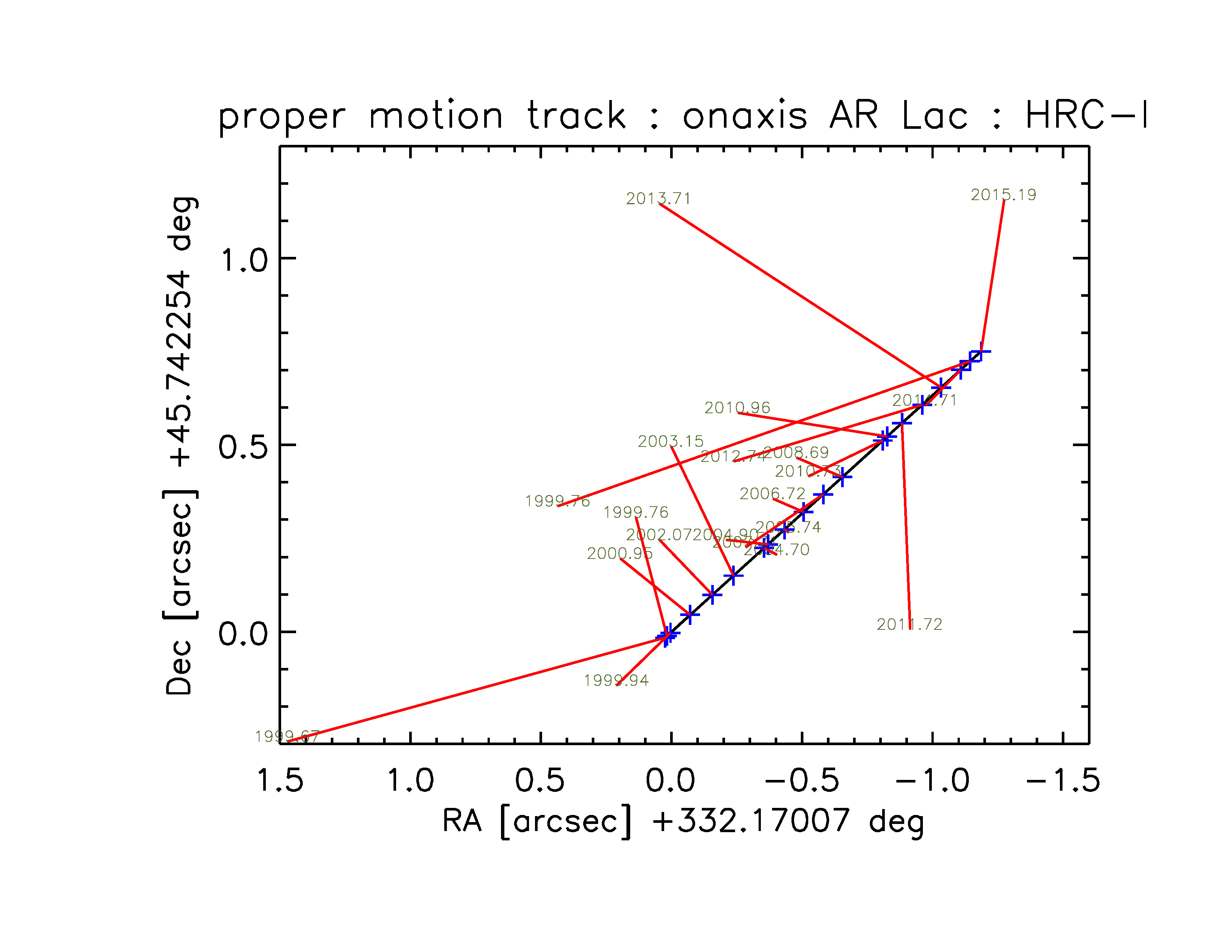
D. As in 1.B, for HRC-I/AR Lac position residuals. The offset is measured to be -0.23±0.07 (disp) and 0.08±0.07 (xdisp).
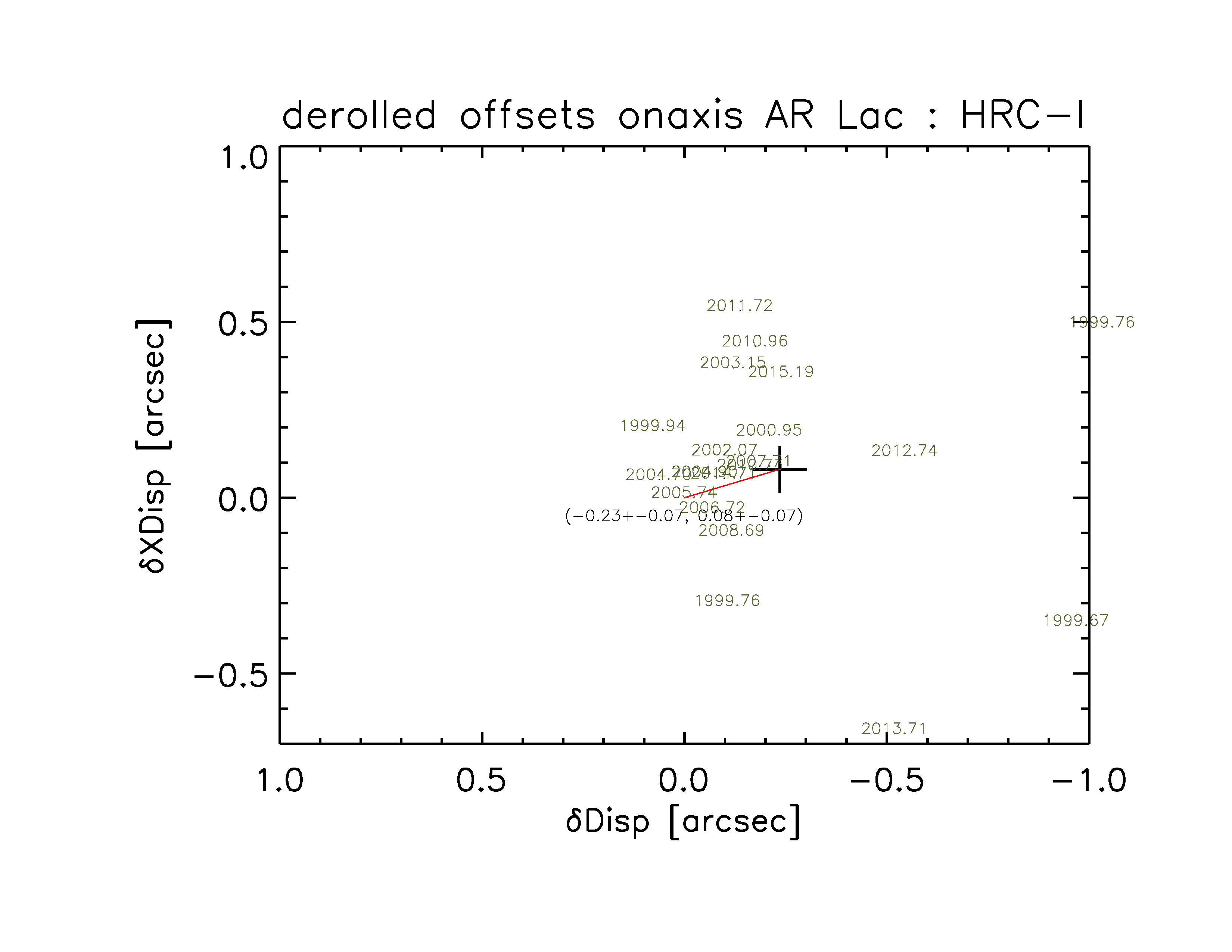
E. As in 1.A, showing the track of HZ 43 observed with HRC-S

F. As in 1.B, for HRC-S/HZ 43 position residuals. The offset is measured to be -0.5±0.04 (disp) and -0.21±0.04 (xdisp).
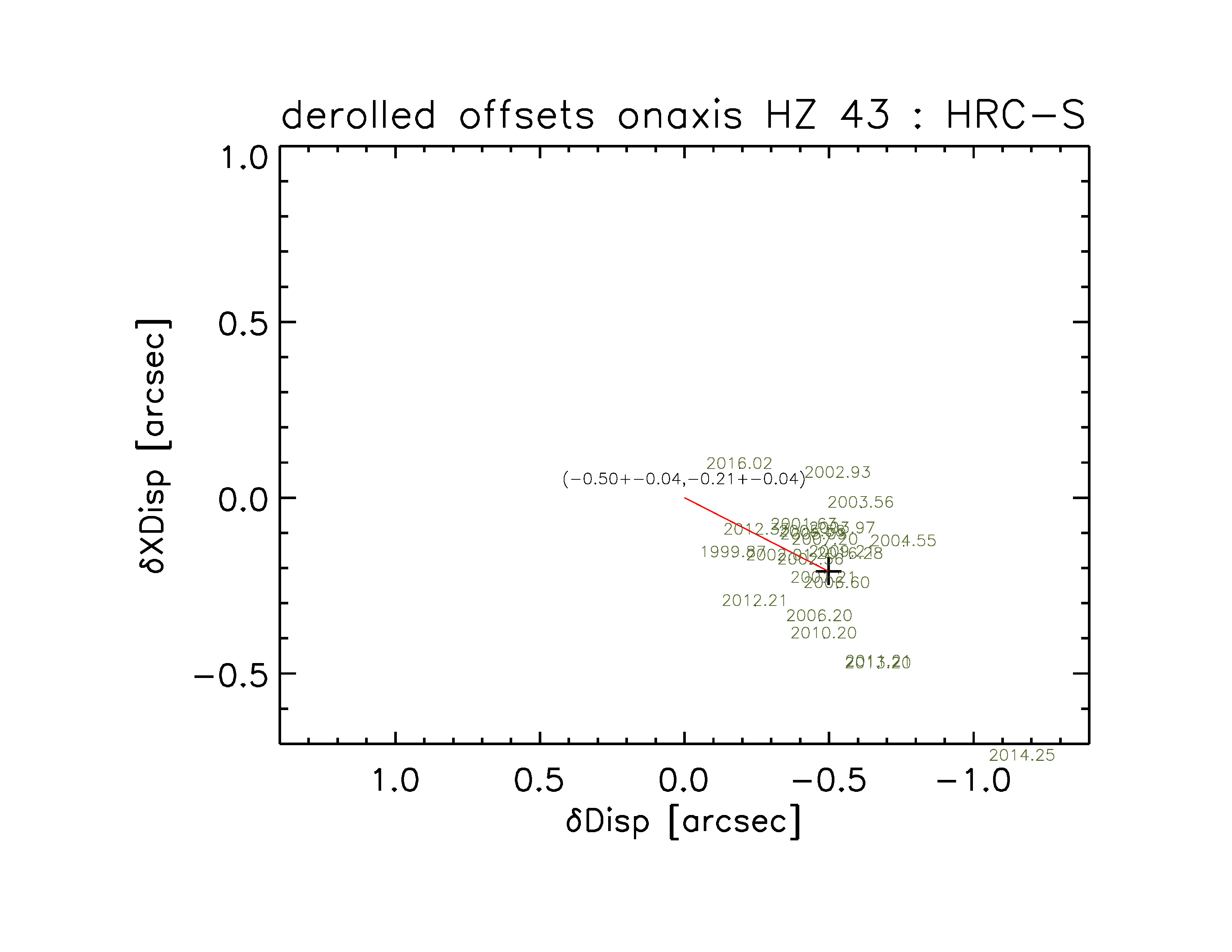
G. As in 1.A, showing the track of HZ 43 observed with HRC-I
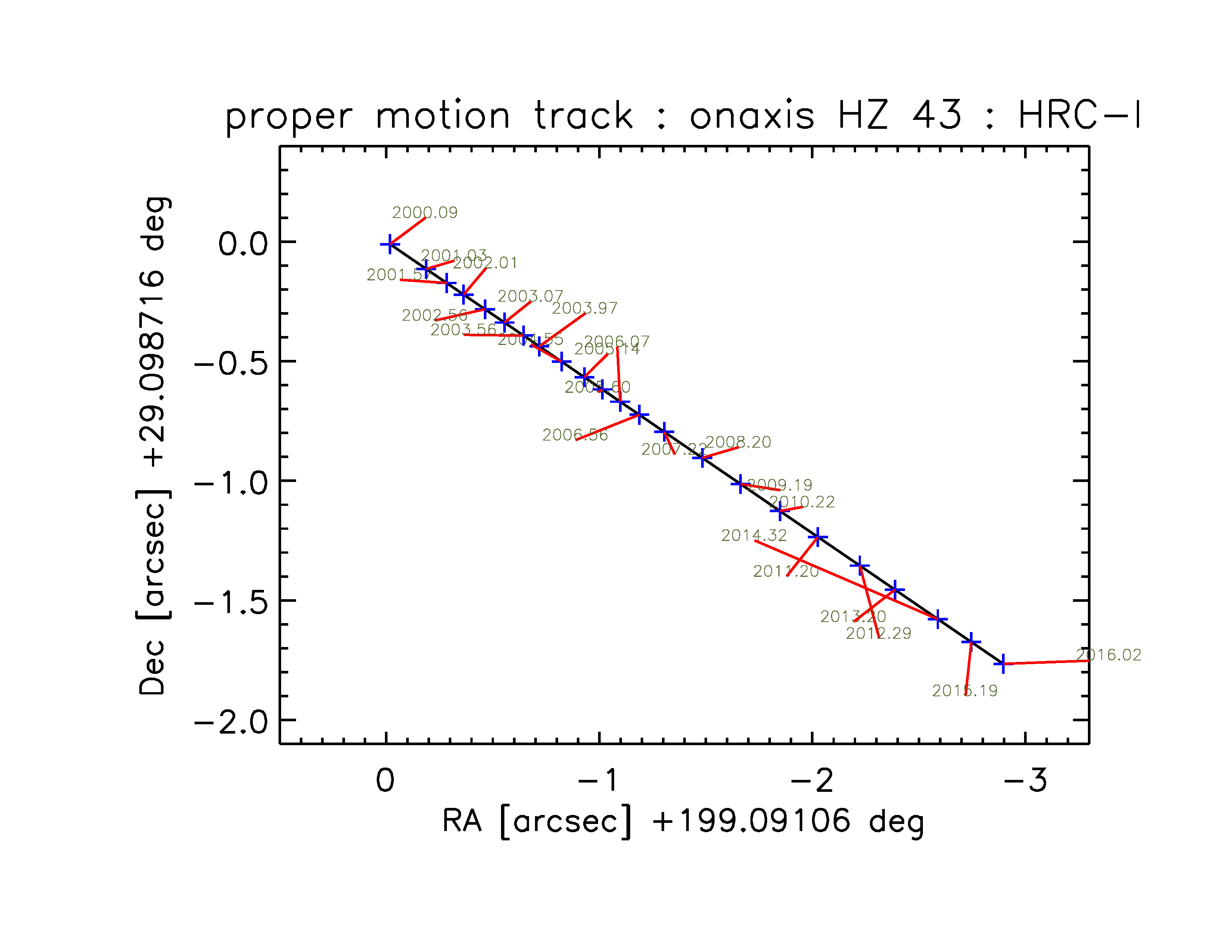
H. As in 1.B, for HRC-I/HZ 43 position residuals. The offset is measured to be -0.11±0.03 (disp) and -0.07±0.04 (xdisp).
